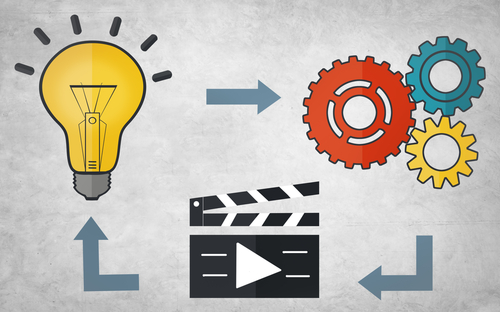Three Building Blocks of Innovation Leadership
This is one of our free-to-access content pieces. To gain access to all Ideas for Leaders content please Log In Here or if you are not already a Subscriber then Subscribe Here.

Fostering innovation in an organization requires the tools and techniques to help generate and implement ideas, the knowledge and abilities to manage innovation processes, and the attitudes that encourage rather than undermine new thinking. The right toolset, skillset and mindset are the three building blocks of innovation.
To foster innovation, the first step is to recognize the difference between business thinking and innovative thinking. Business thinking is logical, builds on past precedents and pursues certainty. Innovation thinking is intuitive, revels in ambiguity, and favours slow reflection over quick decisions. Leaders in innovative companies are adept at both business thinking and innovative thinking.
Many leaders trying to foster innovation in their companies are tripped up by some familiar myths on how to support innovation. The first myth is that innovation can be managed and mandated. In truth, leaders enable innovation by providing the right context and culture for creativity, not by commanding creativity! At the same time, innovation is about creative ideas turned into action. This means that leaders cannot just let creative be creative. They must also provide the structure and execution skills to move innovation beyond the idea stage and into the marketplace.
In their paper, “Becoming a Leader Who Fosters Innovation,” David Magellan Horth and Jonathan Vehar of the Center for Creative Leadership lay out the three building blocks of innovation leadership.
The first of the building blocks is an innovation toolset. There are a variety of tools and techniques to help innovation leaders galvanize and enable the generation and implementation of creative ideas. For example, brainstorming and mind-mapping are two ways to free creative thinking from self-imposed constraints. Another example is simple prototyping, which is a technique for executing and testing ideas without massive investment.
The second building block for fostering innovation is the innovation skillset. Innovation leadership is required at all levels of the organization. Lower level project leaders manage their teams and the creative process, middle and functional managers ease collaboration between different groups and across organizational boundaries respectively, and top managers set an innovation strategy and institute a culture that encourages and enables innovation.
The third building block is the innovation mindset. Innovation tools and skills are powerless without an innovation mindset: the attitudes (and subsequent behaviours) that favour rather than undermine innovation. Curiosity, affirmative judgement (emphasizing the positive rather than the negative), and taking the time to be reflective (allowing leaders to view issues from different perspectives or to catch nuances not readily apparent) are three of the components of an innovation mindset.
Fostering innovation is more difficult than many leaders realize. They must reject the myths that lead to failure, and work diligently to help their organizations acquire and incorporate the toolset, skillset and mindset without which innovation will not survive.
The following are some specific actions to help organizations develop the toolset, skillset and mindset for innovation leadership:
Avoiding the know-it-all mindset of too many leaders, putting in place the right culture, systems and resources, and giving people the chance to collaborate and the freedom to make mistakes are keys to fostering the innovation organization.

Ideas for Leaders is a free-to-access site. If you enjoy our content and find it valuable, please consider subscribing to our Developing Leaders Quarterly publication, this presents academic, business and consultant perspectives on leadership issues in a beautifully produced, small volume delivered to your desk four times a year.

For the less than the price of a coffee a week you can read over 650 summaries of research that cost universities over $1 billion to produce.
Use our Ideas to:
Speak to us on how else you can leverage this content to benefit your organization. info@ideasforleaders.com